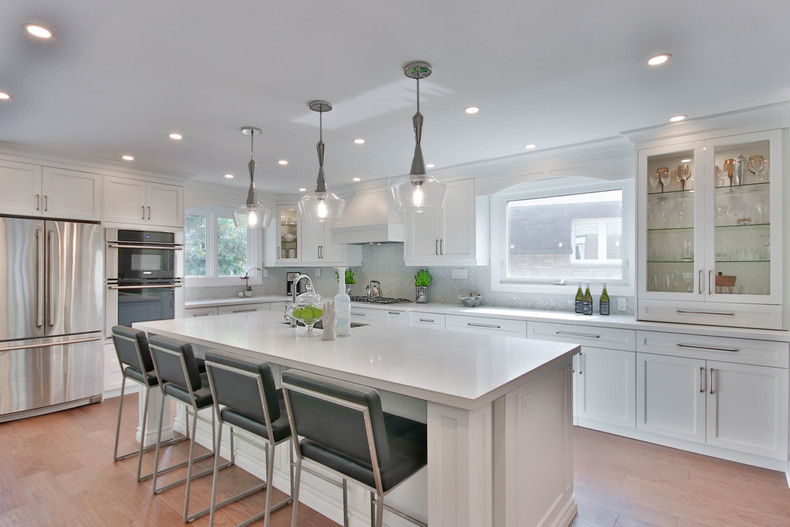A Guide to Choosing the Perfect Legs For Kitchen Island for Your Home
Selecting the optimal legs for your cooking area island is a nuanced choice that impacts both the performance and aesthetic charm of this main area. Aspects such as elevation, products, and style play a critical duty in integrating your island with the total kitchen area design. Additionally, understanding the value of security and upkeep can considerably affect your selection. As you consider these components, it ends up being obvious that the best legs can change not only the look of your cooking area however additionally its usability for several years ahead. What details attributes should you focus on in this option process?

Comprehending Cooking Area Island Legs
When choosing legs for a kitchen island, it's vital to understand their functional and visual roles in the general design. The legs work as a crucial assistance system, ensuring security and resilience for the island, which usually functions as a work area, dining location, or collecting spot. Therefore, the choice of material and building and construction technique must be durable enough to hold up against daily usage and potential wear.
In enhancement to their architectural duties, legs contribute considerably to the island's aesthetic appeal. They can improve the kitchen area's design, whether via typical, modern, or eclectic layouts. The height and proportion of the legs are likewise crucial considerations; they have to balance with the island's kitchen counter elevation while guaranteeing comfortable seating for those utilizing the space.
Moreover, the leg design can influence the general circulation of the kitchen area. Open, ventilated leg styles can develop a feeling of agility, while strong, substantial legs may share an extra grounded and steady aesthetic - Legs For Kitchen Island. Understanding these visual and useful facets will guide home owners in making educated choices that complement their cooking area's layout and improve its use
Popular Styles and Products
The selection of legs for a kitchen area island incorporates a variety of prominent designs and products, each offering distinct features that can improve both capability and aesthetic appeals. Traditional legs usually show ornate details and workmanship, boosting timeless kitchen styles.

Elevation and Stability Factors To Consider

The legs of the kitchen area island need to offer ample support, ensuring that the framework can hold up against day-to-day use without moving or tottering. Material choice plays a considerable duty in stability; metal legs, for instance, have a tendency to provide better toughness contrasted to timber.
Matching Your Kitchen Aesthetic
Selecting the appropriate legs for your kitchen area island goes beyond performance; it likewise plays a substantial duty in the overall aesthetic of the room (Legs For Kitchen Island). When picking legs, think about the design style of your kitchen.
Legs internet that match or comparison with your island's surface area and bordering cabinets can create visual harmony or striking focal points. In addition, think about the coating of the legs; matte, shiny, or distinctive coatings can dramatically affect the general feeling of the kitchen area.
Setup and Maintenance Tips
Mounting kitchen island legs requires cautious focus to detail to make certain both stability and aesthetic allure. Use a stud finder to find wall surface studs if you are attaching the legs to a wall or making use of brackets for added support.
When safeguarding the legs, use top notch screws and, if necessary, timber glue for extra toughness. For steel legs, guarantee that you are utilizing ideal supports and tools to avoid damages to your floor covering. It is advisable to look for levelness after setup, making changes as required to stay clear of wobbling.
Maintenance is equally essential for durability - Legs For Kitchen Island. Regularly examine the legs for any kind of indicators of wear or helping to see loosen, particularly in high-traffic areas. Clean the legs with a suitable cleaner, avoiding rough materials that may scratch the surface. For wooden legs, consider applying a wood conditioner periodically to maintain their coating. By adhering to these installment and upkeep pointers, you can make certain that your browse around this web-site cooking area island legs continue to be both aesthetically attractive and useful.
Verdict
In final thought, selecting the proper legs for a kitchen island demands careful factor to consider of height, stability, and visual compatibility. Eventually, thoughtful leg option plays an important duty in elevating both the functionality and design of the kitchen area room.
When selecting legs for a kitchen area island, it's essential to comprehend their aesthetic and useful functions in the total design. Open, airy leg styles can produce a feeling of agility, while strong, considerable legs might share an extra grounded and secure aesthetic. The legs of the kitchen area island ought to offer adequate assistance, making sure that the structure can endure daily use without tottering or moving.Setting up kitchen island legs needs cautious interest to information to guarantee both stability and aesthetic appeal.In conclusion, selecting the appropriate legs for a kitchen island necessitates cautious factor to consider of elevation, security, and visual compatibility.